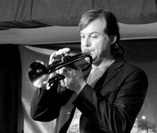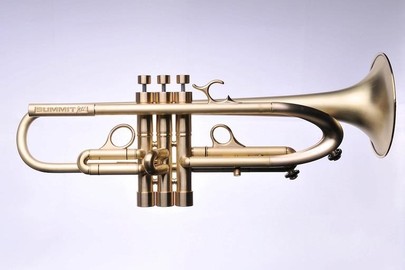 We all value high quality, the latest technology and personal customer service, right? So why then do we so often settle for the lowest price? Having served the custom trumpet market for half of my life, I often wonder why anyone would purchase a Bach or Yamaha trumpet for more than $1500. There is a price point where it makes sense to seriously consider quality, technology and service. Purchasing a Bach or Yamaha could possibly get you quality depending on the vintage and specific build of the instrument and customer service is subject to the retailer, but where is the technology? $1501 is too much! Why do I believe $1500 is the maximum you should spend on a factory-built horn? The short answer is that I don't believe Bach and Yamaha trumpets hold real value more than this amount. The design and production of factory-built horns has changed very little in the past several decades and in many cases over fifty years, so why should you pay more for the same product? When I was in high school, a brand new Bach Stradivarius was priced around $1500 at the music store. The exact same model 37 in silver plate today lists for $4125.00 and is on sale for $2959. For $41 more, you could own a Harrelson HT3 or Bravura S model, which is significantly easier to play. Now some will say that inflation is to blame for the price increase, but I disagree. Inflation would only be a valid factor if the 1980's product was equal to today's product. You wouldn't value a calculator from 1985 the same as a calculator today unless today's version was on par with the current technology. For example, the TI-81 calculator was introduced in 1990 for $110. Today, a free application on my mobile phone has more capability and functions than this once coveted mathematical wonder. Today's equivalent to the the TI-81 is the new full color TI-84+C, which incorporates the newest processors and incredibly complex functions when compared to the TI-81 for only $190. It is interesting to note that the adjusted inflation for $110 in 1990 is equivalent to $190.30 in 2012 dollars. So Texas Instruments has effectively priced their calculator at the same price while the technology has greatly increased. Value of a production trumpets today vs. 25 years ago Consider the Bach Stradivarius once more. Remember, the price of a Bach Strad was $1500 in 1988 when I was in high school. The equivalent price today adjusted for inflation is $2866.46. However, Bach trumpets now sell for a minimum of $2959 or almost $100 more than their old value. Now compare the differences between the 1988 Bach trumpet and today's version. They are nearly identical with one obvious difference, the new version has cheap light computer engraving on the bell in place of the very clean deep bell stamps of yesteryear. There are other slight differences in production, but none of which I would characterize as improvements and certainly none that have incorporated modern technology with the goal of improving the playability of the horn. If anyone reading this knows any different, please feel free to correct me. I take Bach Strads in on trade every few weeks and have yet to observe any advances in design or efficiency. So we have a slightly less valuable Bach trumpet available today for approximately $100 more than the 1988 offering. This would be the equivalent of going to the store today and purchasing a TI-81 calculator made by 1990 standards for around $200 while the option to purchase a different brand calculator on par with today's TI-84+C is available for less. In reality, today's Bach Stradivarius is worth no more than what it was is 1988 or 1968 for that matter. This instrument reached its development peak in the 1940's, yet it remains a strong selling brand thanks to the efforts of Vincent Bach himself. I have great respect for Vincent Bach and his hand built instruments, yet I do not believe they hold nearly the value customers pay every single day. A very long history of advertising, artist endorsements and customer loyalty are to blame for the popularity of this instrument. But the high price is likely a result of consumers overpaying simply because they were told to do so. The Golden Age of Trumpet Think of all the products that have changed over the last twenty, thirty, even fifty years due to advances in technology. Automobiles, televisions, cameras, heating and cooling systems, even the light bulb have come so incredibly far! And where are the advances in brass instrument design? Well, I would like to think they are right here at Harrelson Trumpets. There are many other great innovators working to improve brass instruments and it is up to the individual consumers to take notice and participate in the revolution that will soon become the norm. Now is possibly the most exciting time to be a trumpet player as we have resources like youtube, google searches and companies taking huge risks to bring you more options than ever existed. I am grateful to be here today serving so many of you each and every day building trumpets, mouthpieces, accessories and everything in between! Will you settle for average? The long answer to my original question, "Why do I believe $1500 is the maximum you should spend on a factory-built horn?" is really all about attitude. Do you want the very best in life or are you willing to settle for status quo? I ask myself this question quite often and the answer to simple things like a haircut, blue jeans and travel arrangements is that I'm happy with consuming the average offerings in these areas of living. But when it comes to the really important details in life like choosing tires for Minnesota driving, dinner with my wonderful girlfriend, a new cnc machine or the horn I play, I am putting my money on the very best options available. This is literally why I started building trumpets 18 years ago, to create what was not available for sale at that time, an amazing instrument that met my high expectations. In my opinion, fifteen hundred dollars is far too much to spend on an average horn designed and built to meet 1940's expectations. Endorsements and False Advertising I am often asked by the up and coming younger players for a free trumpet. Apparently, the new generation of trumpet players today are so confident in their abilities that they truly believe they deserve a tangible reward from a complete stranger. This is a point of discussion every so often here in the shop and office. The consensus is that some people are out of touch with reality and that this attitude stems directly from the advertising techniques of large corporations. We're all familiar with Nike paying Michael Jordan a lot of money to wear their shoes and so on, but why do we buy into this false advertising. When a specific person (or celebrity) endorses a product, they often do this for the perks and rarely for any other reason. Paying someone undisclosed large sums of money does not influence my decision to purchase the same product. In fact, it sends me looking at competitor's products who focus on innovation rather than popularity. I truly believe that all paid endorsements are some form of false advertising. When a customer must be paid to play a specific brand trumpet, there is something wrong. I only consider unpaid endorsements and those of the innovators, inventors and owners of companies. Even then, consider that an endorsement is nothing more than a person publicly stating their preference for a product. Adolph Herseth played Bach and sounded amazing throughout his long career with the Chicago Symphony. Wynton Marsalis plays Monette and captivates me with every note on dozens of albums and live performances. And Louis Armstrong, one of my all time favorite jazz trumpeters, performed on a variety of trumpet brands and models. Regardless, I would not expect to sound or play like any of these great musicians just because I purchased the same model. In fact, I have played numerous examples of most of their instruments and still sounded like me at the end of the day. My message to young players hoping to land an endorsement is simple. If you don't love it (a specific trumpet) enough to pay for it, then you're fooling yourself into believing you are better than others. Trumpet playing is not about being the best, it is about expressing your thoughts and feelings to your audience while conversing with your fellow musicians on stage. Seeking endorsements has nothing to do with making beautiful music and has the potential to limit your career opportunities and growth as a musician.  Higher Quality, Design, Engineering & Production are within reach In writing this blog entry, I have been contemplating not publishing any of this and filing it away for my own reflection. I am generally not one to sell my wares through blatant comparisons as I feel each person will seek out what will best fit their needs. However, if this were true then I would not be receiving hundreds of emails and phone calls every month with requests from players to upgrade their equipment. The simple truth is that most trumpet players struggle with knowing their options or prefer the simplicity of buying what is popular only to find years down the road that they have chosen an average product rather than a real, lasting solution. Consider the following possibilities when working with Harrelson Trumpets:
Please consider the true value of everything you consume and purchase whether it be food, shelter, transportation or entertainment based. Is what you are consuming an asset that will grow in value? Will this asset solve problems and bring happiness to your life? Is it worth the price tag when compared to other viable options? Who stands behind this asset and what is their motivation in bringing it to market? Answering these questions will help us be mindful of our consumption trends. Maybe some of you have ideas to share? If so, please leave a note!
8 Comments
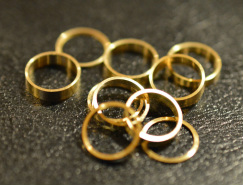 We have already taken several orders for the new Mouthpiece Gap Shim Kit, which includes 10 precision machined brass tubes designed to reduce gap. You could dramatically improve the playability of your current setup by doing the following: 1) Measure your current gap 2) Determine your target gap - usually .060 to .100 inches 3) Wide Gap: Insert appropriate gap shim inside the Mouthpiece Receiver of your trumpet 4) Narrow Gap: Reduce length of mouthpiece shank Note: Installation is easier with the new Venturi Measurement Tool (VMT) and measuring gap with the new Gap Measurement Tool (GMT). You may also purchase the entire Gap Solution Set. 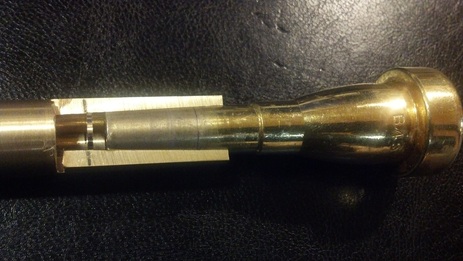 Example 1 - Monette B4S Goal: Increase flexibility, lessen resistance Original Gap: .138" Gap Shim Size: .040" New Gap: .098" Expected Result: More open air flow, balanced flexibility & slotting  Example 2 - GR 64S Goal: Decrease hard slotting, increase flexibility, lessen resistance Original Gap: .167" Gap Shim Size: .080" New Gap: .087" Expected Result: Hard slotting in upper register is replaced with even scale and arpeggio, flexibility when playing wide intervals is greatly improved, air flow is increased  Example 3 - Bach 1C Goal: Achieve a gap of zero allowing the maximum flexibility & air flow Original Gap: .020" Gap Shim Size: .020" New Gap: .000" Expected Result: Zero gap is sometimes preferred by players accustomed to open air flow and extreme flexibility. This setting requires a very good ear as intonation on each note is determined more by the player. Examples of Mouthpiece Gap variations by Manufacturer and Model The following gallery shows 31 different mouthpieces inserted into a Harrelson trumpet receiver. This illustrates the corresponding gap variations present among various mouthpiece taper lengths. The Harrelson Receiver taper and length was designed to minimize gap when used with most standard mouthpieces. When ordering a Harrelson Trumpet while using a Monette mouthpiece, the gap is almost always reduced by means of moving the leadpipe closer to the receiver taper to compensate for the extremely short shank length. The opposite is true if a client states they primarily use Schilke or various Bach mouthpieces. Bach mouthpieces typically vary in length by as much as .12 inches and are a major source of gap issues. Yamaha mouthpieces are not shown, but consistently measure slightly shorter than vintage Bach mouthpieces. Bach (Gap: .005 - .02) Bach mouthpieces typically vary in length by as much as .12 inches and are a major source of gap issues. Schilke (Gap: 0 - .08) Schilke mouthpieces commonly have a long shank creating very small gap. Click on photo for gap measurements, make, model information GR (Gap = .056 - .167) GR mouthpieces have the widest gap variance of any modern manufacturer I have measured. Marcinkiewicz (Gap = .08 - .11) Marcinkiewicz mouthpieces are consistently within range of acceptable gap on most trumpets. Reeves/Stomvi (Gap = varies) the Stomvi/Reeves Flex Sleeve 4.5 produces a .100" gap. Interchangeable shanks ensure a perfect fit. Click on photo for gap measurements, make, model information Harrelson (Gap = custom designed to your playing preferences and determined before the trumpet and/or mouthpiece are made) Click on photo for gap measurements, make, model information Monette (Gap = .112 - .143) Monette mouthpieces consistently have shorter shanks and larger gap translating to hard slotting. Click on photo for gap measurements, make, model information Warburton (Gap = .085 - .107) Warburton mouthpieces often produce gap close to the average target of .100". Austin ACB (Gap = .076) Produced by Pickett, the ACB produces less gap increasing flexibility and airflow. Stork (Gap = .109) Stork mouthpieces often produce gap close to the average target of .100". Taylor (Gap = zero) Taylor mouthpieces do not always fit other brand receivers. Callet (Gap = .075) Produced by Kanstul, this Superchops I offers the more desirable slightly smaller gap. Curry (Gap = .048) Curry mouthpiece shank lengths vary by model, I suspect to achieve results related to their purpose. Wick (Gap = .123) I have measured relatively few Wick mouthpieces. In this case, closing the gap with a .020 shim is advised. Greg Black (Gap = .115) I have measured relatively few Black mouthpieces. In this case, closing the gap with a .020 shim is advised. Click on photo for gap measurements, make, model information Remember, the steps to measure and adjust gap:
1) Measure your current gap 2) Determine your target gap - usually .060 to .100 inches 3) Wide Gap: Insert appropriate gap shim inside the Mouthpiece Receiver of your trumpet 4) Narrow Gap: Reduce length of mouthpiece shank Note: Installation is easier with the new Venturi Measurement Tool (VMT) and measuring gap with the new Gap Measurement Tool (GMT). You may also purchase the entire Gap Solution Set. |
Jason Harrelson
Inventor, Musician, Educator and Founder of Harrelson Trumpets, Trumpet Momentum and Harrelson Momentum. Archives
July 2024
|



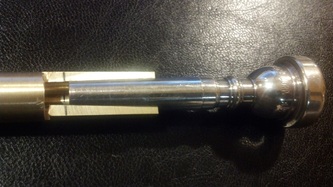
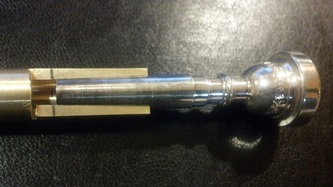
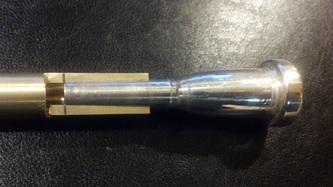
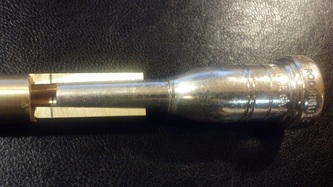


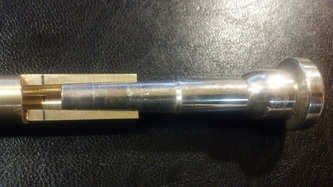

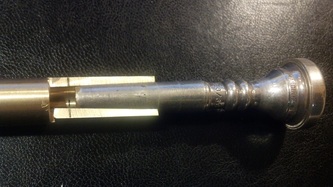

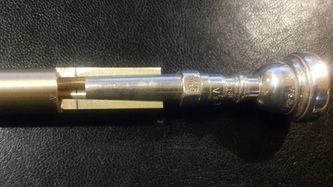

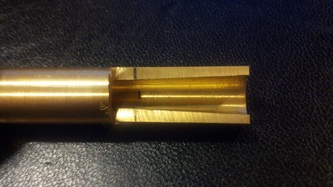



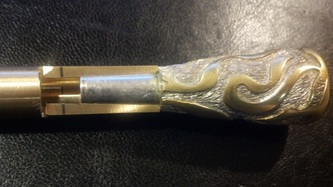
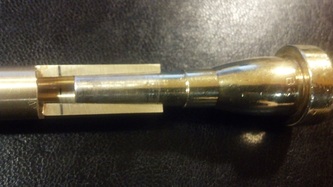

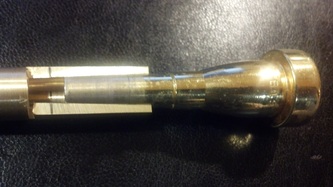

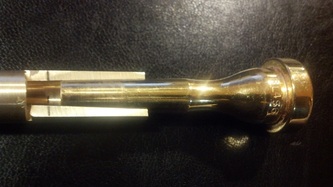

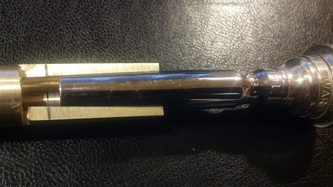



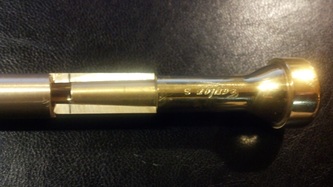



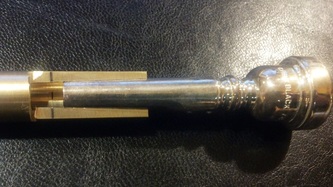
 RSS Feed
RSS Feed
